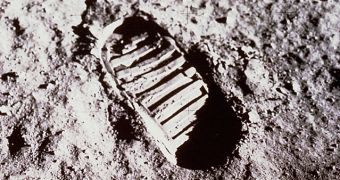As described in a previous article, Moon dust is a terrible problem that astronauts have to face and which has to be solved if humans are ever supposed to set a firm foot on lunar surface for more than just an erratic scientific expedition. That type of dust is extremely fine and rugged, as well as very adherent to any surface, causing major damage to equipment and, even worse, putting the health of Moon-walkers at risk. Handled with care, though, it could be turned into concrete for a lunar base.
But during the late '60s, when the only manned missions to the Moon were carried out (by the American Apollo mission series), the dust was not perceived as a major problem. Still, it was considered important enough in order to provide the Apollo 11, 12 and 14 missions with "dust detectors" designed by Brian O'Brien, a physicist from Perth, which transmitted data back to Earth, where it was recorded on 173 tapes.
"These were the only active measurements of moon dust made during the Apollo missions, and no-one thought it was important," shared Dr. O'Brien, quoted by ABC News Australia. "But it's now realized that dust, to quote Harrison Schmitt, who was the last astronaut to leave the moon, is the number one environmental problem on the moon." The trouble is that NASA lost the copies of the tapes sent from Perth and forgot all about them in the meanwhile. Luckily, the originals were still available, kept at Perth, in Australia.
Guy Holmes, a technician from a data recovery company offered to extract the data from the “ancient” tapes and he was appointed to the task. But it took a while before he managed to track down a fridge-sized tape recorder (at the Australian Computer Museum) that could playback the content of the old tapes, that is if Holmes manages to fix it. "It's going to have to be a custom job to get it working again. It's certainly not simple, there's a lot of circuitry in there, it's old, it's not as clean as it should be and there's a lot of work to do," explained Holmes, who hopes that he will have it running by January, and the extracted data a week later.

 14 DAY TRIAL //
14 DAY TRIAL //